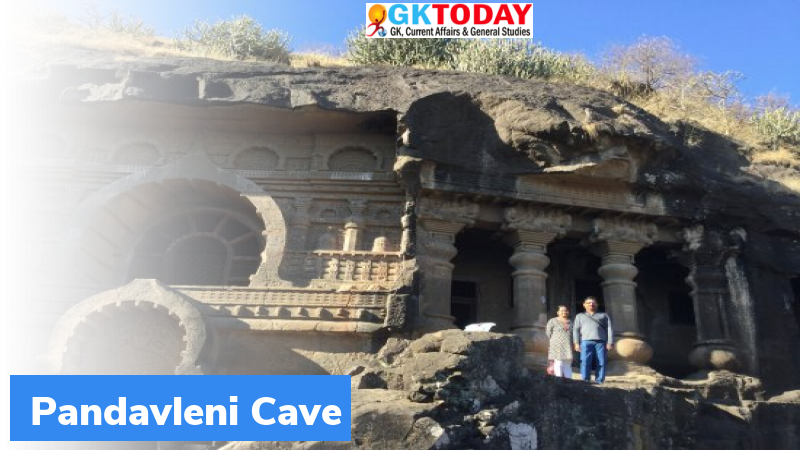Pandavleni caves: Three caves found in Buddhist Caves Complex, Nasik
Archaeological Survey of India (ASI) has found three caves in Buddhist Caves Complex in Nasik, Maharashtra.
Highlights
- Newly discovered caves are being discovered about two centuries after the British military officer documented Tri-Rashmi Buddhist caves, which is also called as Pandav Leni, on a hill in Nashik.
- Antiquity of caves is yet to be established. They may have been dwellings of Buddhist monks.
- Archaeologists believe, these caves could be older than Trirashmi caves.
About discovered caves
These caves were discovered on opposite side of the current complex. They are about 70-80 feet above the existing complex and have been carved out of a steep hill. They look like monks’ dwellings and older than the current complex. Two of the caves have shared dwellings while third was perhaps occupied by one monk. All these caves comprise of verandahs and characteristic square stone platform for monks. They have special arrangements for monks to meditate. Caves also have images of Buddha & Bodhisattvas and sculptures with designs of Indo-Greek architecture.
Background
The Buddhist sculptures and caves are a significant example of “Indian rock-cut architecture” which represent Hinayana tradition of Buddhism.
About Pandavleni caves
Pandavleni caves were earlier called as ‘Trirashmi caves’. These caves are a group of 25 caves, carved out of Tri-Rashmi Hill between 2nd century BC and 6th century AD. Vihara and the Chaitya are the main caves among 25 caves. Complex of the cave was documented in 1823 by Captain James Delamaine. It is an ASI protected site and a famous tourist destination.
Month: Current Affairs - June, 2021


